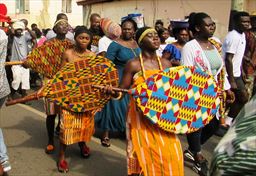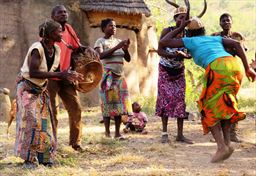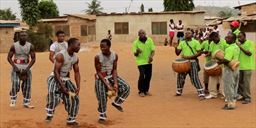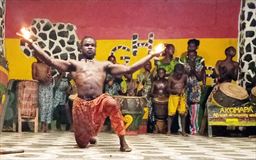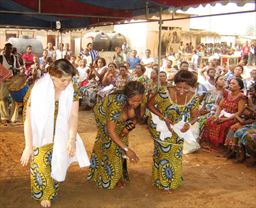Music, Dance & Ceremony
Music, Dance & Ceremony
In Ghana, music and dance are part of everyday life and will be heard and seen everywhere.
Music of Ghana
There are four main types of music heard in Ghana today: Contemporary music, Traditional music, Gospel music and Imported music.
♫ Contemporary music ♫
Contemporary music from Ghana is mostly comprised of 'Highlife' and 'Hiplife' musical styles as well as Afropop and Afrojazz. Highlife music was first recorded in the 1930's and reached its popular peak in the 50's through 70's. It takes a traditional percussive beat and fuses it with various European, American and Caribbean flavors. Mensah, Nana Ampadu, Amakye Dede, A.B.Crentsil, Nana Achempong, Rex Omar and Daddy Lumba are some of the well known performers of highlife.
Hiplife is a newer style of music that combines the Highlife beat with influences from American Hip-Hop and Rap. It is a very popular style of music among the younger people and can be heard blasting from many establishments. Popular artists include Sarkodie, Shatta Wale, Stonebwoy, KiDi, Kuami Eugene, Black Sherif.
♫ Traditional music ♫
While the style may differ between north and south, traditional music comprising of singing, clapping, drumming and dance are ritualized events occurring at funerals, ceremonies, festivals, weddings and other public and private gatherings. Drums and gong-gong are more prevalent in the south, while string instruments, xylophone, and the calabash are more used in the north.
At festivals and celebrations the music and dance will be a social ritual that tells a story or re-enacts an event of historical significance to the tribe. Seyram Musique is an example of a popular modern-day traditional acoustic artist who sings mostly in the Ewe language.
Here is a fun interactive site to learn about how musical instruments work together in Ghana traditional music.
♫ Gospel music ♫
Ghana is a very religious country, and the music reflects this. You should feel welcome to visit any church service anywhere in the country. You would be warmly welcomed.
♫ Imported styles ♫
American Pop, Hip-Hop and surprisingly Country are some of the most encountered contemporary music imports heard in Ghana in the larger towns and cities. Some contemporary French music will be heard closer to the Cote d'Ivoire and Burkina Faso borders. Jazz performers can be found in larger metropolitan areas or upscale clubs.
Reggae is by far the most popular non-American style and is heard everywhere. There are enormous Rasta parties at various locations, including Wednesday nights at La Beach, and Saturday nights in Kokrobite. Popular artists like Rocky Dawuni, Black Prophet, Ras Kuuku are well known for their good reggae tunes with African roots and rhythms as the central focus.
Dancehall is a new and trending music genre in Ghana where popular artists like Shatta Wale, Stonebowy, Samini and many others fuse Ghanaian highlife,afrobeats and Jamaica reggae rhythms to do their music.in their music craft.
Styles of nearby countries can sometimes be heard, especially the closer to a border you are located. Afrobeat from Nigeria, Griot and Mbalax from Mali, Mapouka (also known as "la danse du fessier" or "the dance of the behind") from Cote d'Ivoire - the list of styles goes on and on.
Ghana Dance
Inseparable from traditional music, the dance and ceremony that accompanies it is used to greet gods and spirits, to re-enact or tell a story or legend, or simply as a social recreation. These ceremonial dances may occur at funerals, celebrations, important historical dates and festivals.
There are simply too many rituals and dances to describe, but here are some of the major dances that you may encounter while in Ghana.
♪ Adzogbo ♪
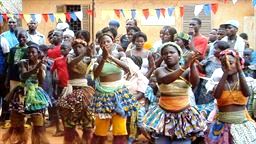 Originally a war dance, now adapted as a social and recreational dance. Women begin the dance with Kadodo, a dance with elegant movement of the arms and taps and hops from the leading foot. Men follow in a series of energetic Atsia, performances which show their strength, dexterity and agility. This is a dance among the Ewe people in the Volta Region.
Originally a war dance, now adapted as a social and recreational dance. Women begin the dance with Kadodo, a dance with elegant movement of the arms and taps and hops from the leading foot. Men follow in a series of energetic Atsia, performances which show their strength, dexterity and agility. This is a dance among the Ewe people in the Volta Region.
♪ Borborbor ♪
Borborbor is a tribal dance of the Ewe people in the Volta Region and southern Togo. The dance involves performers mainly females in colorful long dress and two white handkerchiefs forming a circle, and swaying to the rhythmic beats of the music produced by the drums played by the musicians. While dancing, the performers are supposed to spin the two handkerchiefs in the air.
♪ Kple ♪
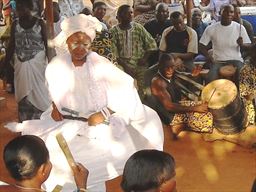 A religious dance from Greater Accra, this dance is performed by priestesses at shrines during the Homowo festival in late August & early September. This dance is used to communicate with the gods and to bring blessings.
A religious dance from Greater Accra, this dance is performed by priestesses at shrines during the Homowo festival in late August & early September. This dance is used to communicate with the gods and to bring blessings.
♪ Kpanlogo ♪
A popular recreational dance among the Ga-Adangbe people of Greater Accra. A movement in the dance reflects themes such as social issues, politics, and expression of human feelings. The kpanlogo dance is often performed low to the ground with bent knees and bent back and frequently features sexually suggestive motions.
♪ Bamaya ♪
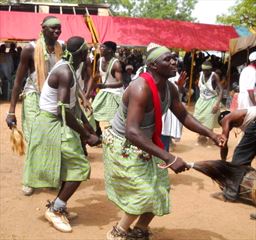 This is a dance of the Dagbamba tribe from northern Ghana. This is an outrageous display of men dressed as women in a dignified, graceful, and thoroughly campy celebration. It marks the end of a great drought that occurred in the 19th century and was ended when the men all dressed as women to ask the gods for help because prayers by women supposedly get a quicker response.
This is a dance of the Dagbamba tribe from northern Ghana. This is an outrageous display of men dressed as women in a dignified, graceful, and thoroughly campy celebration. It marks the end of a great drought that occurred in the 19th century and was ended when the men all dressed as women to ask the gods for help because prayers by women supposedly get a quicker response.
♪ Adowa ♪
Adowa in the Akan language mean “Antelope”. The Adowa dance is a dance by the Akan people of Ghana which is believed to have originated from mimicking the unusual steps of a sacrificial antelope.
It is danced at ceremonies such as marriage, naming ceremony, funerals, festivals, enstoolment and destoolment of chiefs and queen mothers etc.
It is characterized with moving hands accompanied by footsteps and more often than not the dance communicates a particular message. Depending on what the dancer wants to say to his/her audience the dance could be a praise dance, it could be a dance to issue warning, to rain insult on someone, to show power and domination, to express joy etc.
♪ Nmina ♪
This is a dance seen at social gatherings in the Northern region. It is performed by women singing praise to their creator and those who have help to raise them in life. The Calabash features prominently in this dance as a musical instrument as well as dancing accessory.
♪ Agbadza ♪
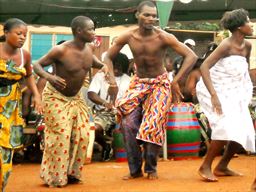 This is a traditional dance of the Ewe tribe of the Volta Region.
This is a traditional dance of the Ewe tribe of the Volta Region.
Performed by men and women accompanied by drums, rattles and gong-gong, there are two main movements: A slow step where the arms move back and forth while extended downwards, and a fast step where the arms flap at the side with elbows extended.
Ceremony in Ghana
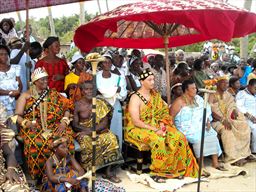 Ghana is a country that celebrates life. In addition to all the normally scheduled festivals during the year, there are several rites and rituals that are performed to mark the passage of life: child-birth, naming ceremonies, puberty, engagement, marriage and death. To the majority of people, these celebrations provide all that is satisfying to their communities and families.
Ghana is a country that celebrates life. In addition to all the normally scheduled festivals during the year, there are several rites and rituals that are performed to mark the passage of life: child-birth, naming ceremonies, puberty, engagement, marriage and death. To the majority of people, these celebrations provide all that is satisfying to their communities and families.
See Ceremonies in Ghana.
At community festivals, especially in the south, there will be exciting durbars of chiefs, when tribal leaders and Queen Mothers process in decorated palanquins, shaded by the traditional umbrellas, and supported by drummers and warriors discharging ancient muskets.

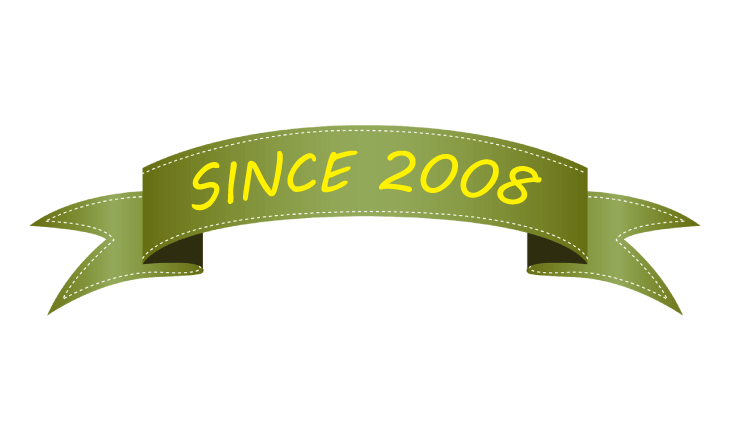
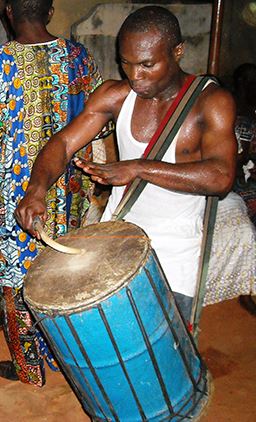
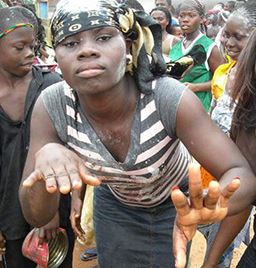
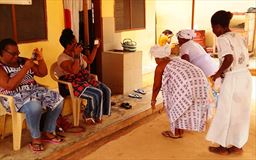
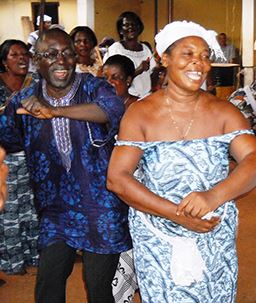
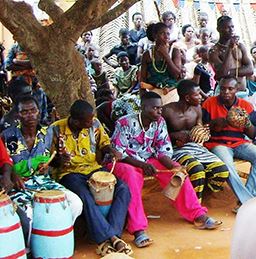
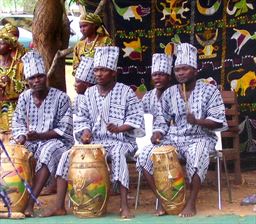
.jpg)
